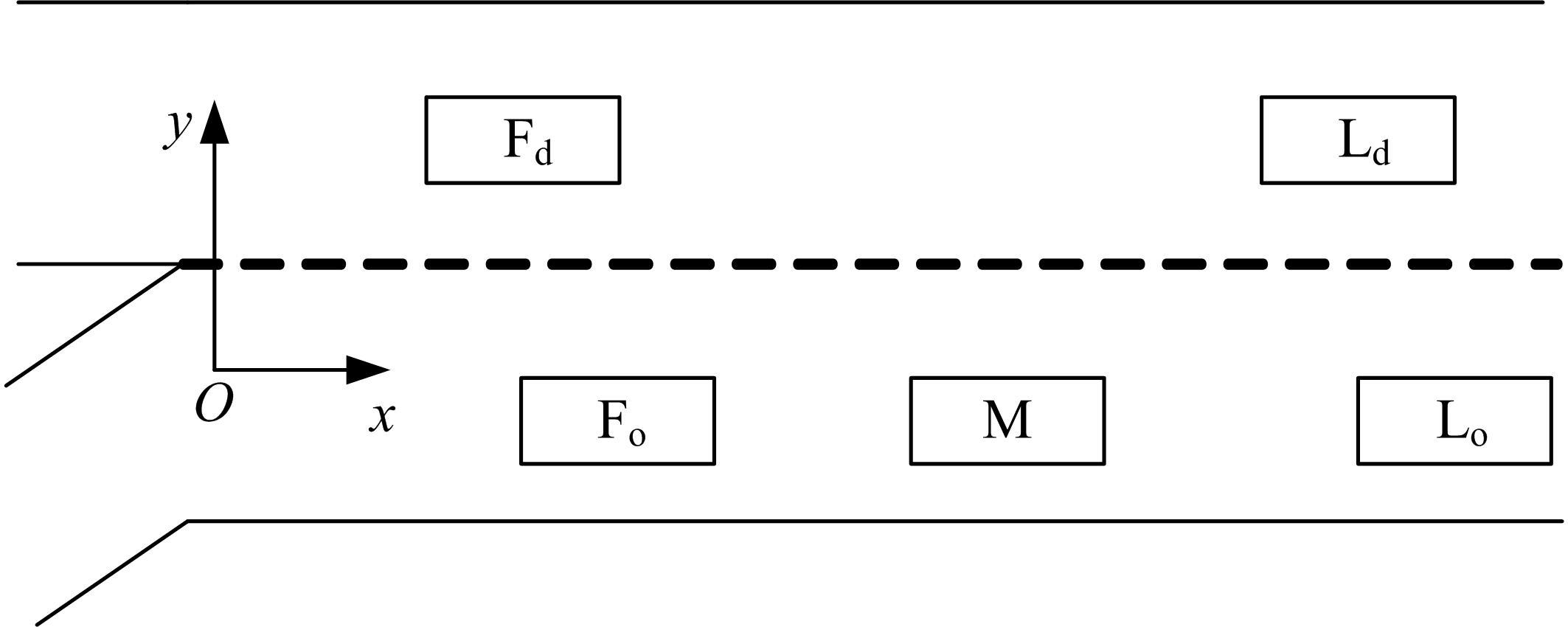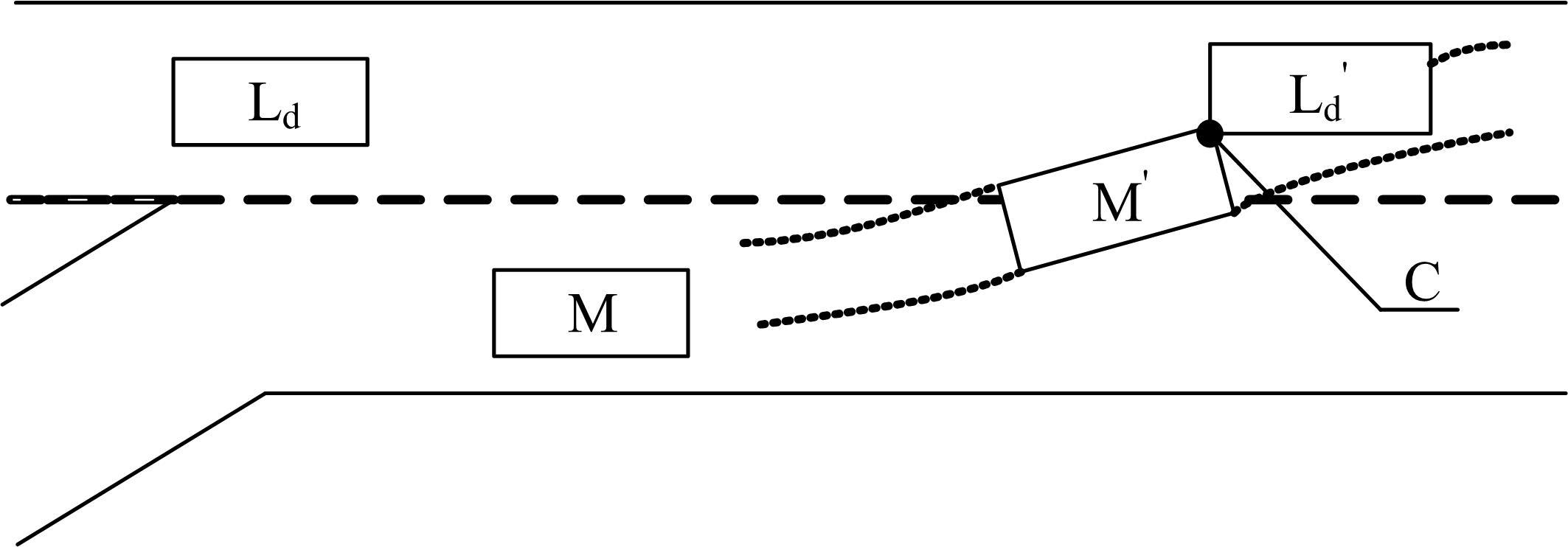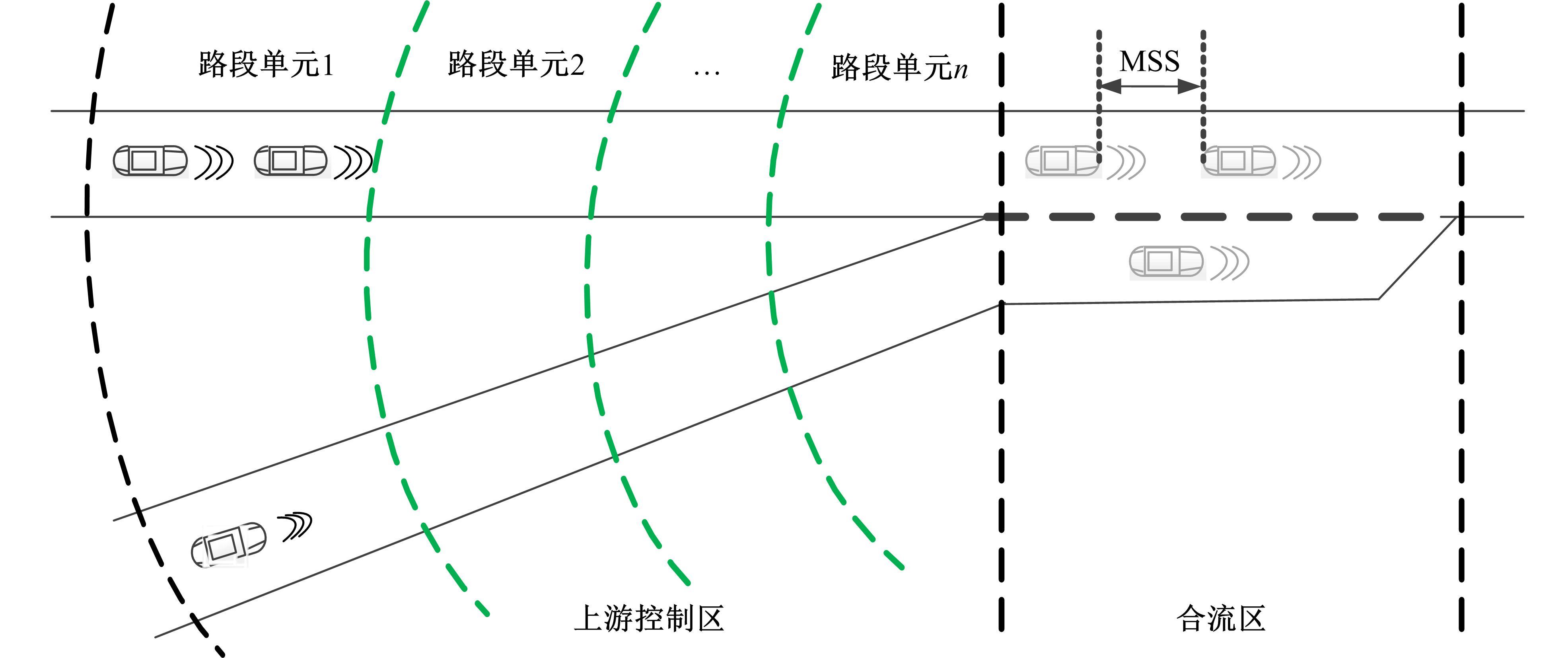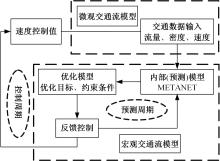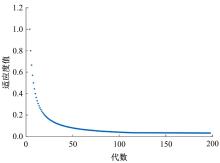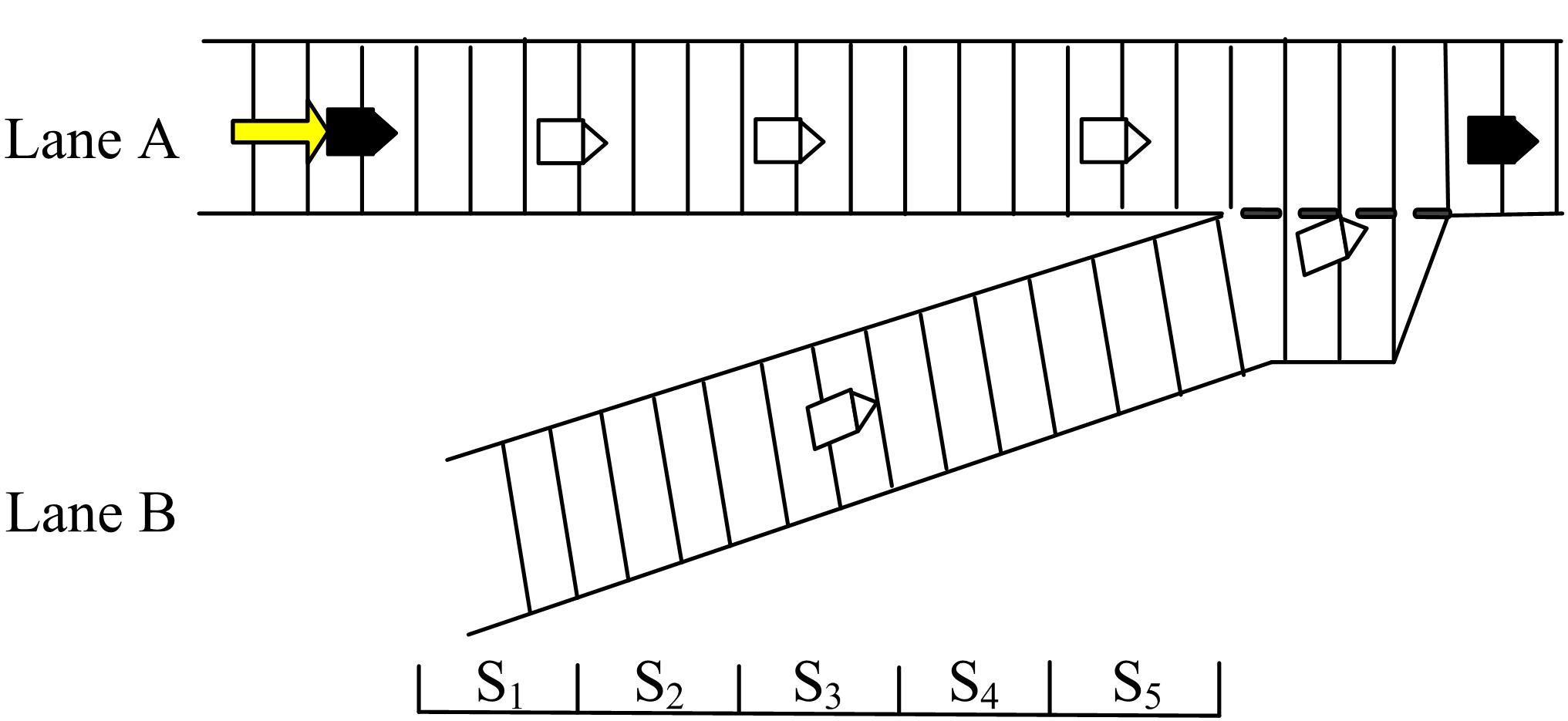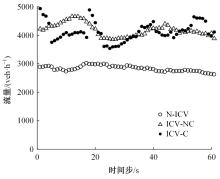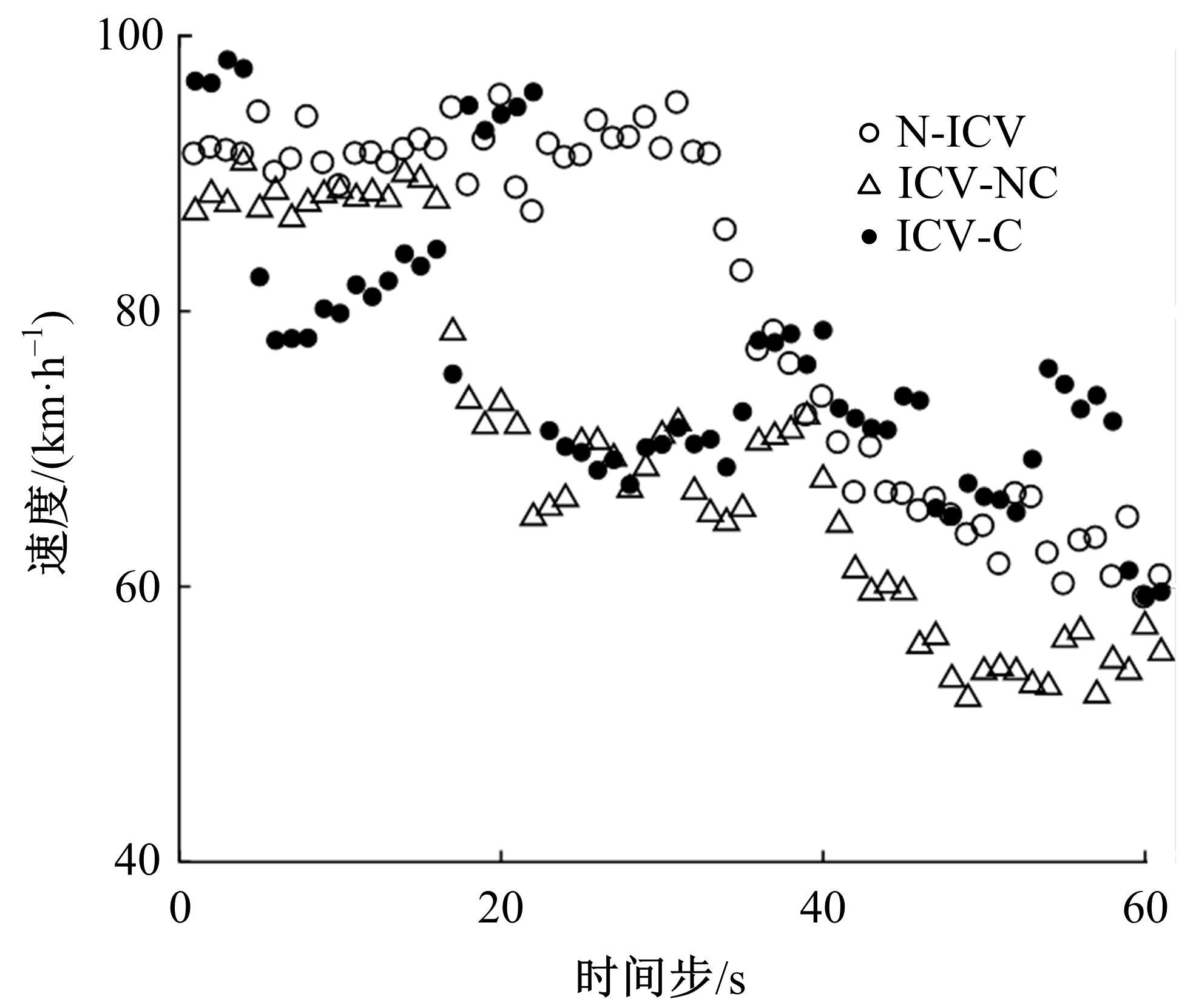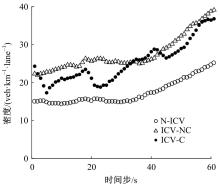Journal of Jilin University(Engineering and Technology Edition) ›› 2022, Vol. 52 ›› Issue (6): 1315-1323.doi: 10.13229/j.cnki.jdxbgxb20210028
Coordinated control method of variable speed limit in on⁃ramp area considering safety distance
Wen-jing WU1( ),Yong-bin ZHAN1,Li-li YANG1(
),Yong-bin ZHAN1,Li-li YANG1( ),Run-chao CHEN2
),Run-chao CHEN2
- 1.College of Transportation,Jilin University,Changchun 130022,China
2.Xiamen Urban Planning & Design Institute Co. ,Ltd. ,Xiamen 361012,China
CLC Number:
- U491.4
| 1 | Kang K P, Chang G L, Zou N. Optimal dynamic speed-limit control for highway work zone operations[C]∥Venue: Hilton DFW Lakes Executive Conference Center, Grapevine, Texas, USA, 2004: 77-84. |
| 2 | Zhang Yi-hang, Sirmatel I I, Alasiri F. Comparison of feedback linearization and model predictive techniques for variable speed limit control[C]∥2018 21st International Conference on Intelligent Transportation Systems, Maui, HI, USA, 2018: 3000-3005. |
| 3 | Zhang C B, Nasser R. Optimisation of lane-changing advisory at the motorway lane drop bottleneck[J]. Transportation Research Part C, 2019, 106(7): 303-316. |
| 4 | Zhang Yao-zong, Ma Ming-hui, Liang Shi-dong. Dynamic control cycle speed limit strategy for improving traffic operation at freeway bottlenecks[J]. KSCE Journal of Civil Engineering, 2021, 25(2): 692-704. |
| 5 | 陈永恒,刘鑫山,熊帅,等. 冰雪条件下快速路汇流区可变限速控制[J]. 吉林大学学报: 工学版, 2018, 48(3): 677-687. |
| Chen Yong-heng, Liu Xin-shan, Xiong Shuai, et al. Variable speed limit control under snow and ice conditions for urban expressway in junction bottleneck area[J]. Journal of Jilin University (Engineering and Technology Edition), 2018, 48(3): 677-687. | |
| 6 | Hu Xiang-wang, Sun Jian. Trajectory optimization of connected and autonomous vehicles at a multilane freeway merging area[J]. Transportation Research Part C: Emerging Technologies, 2019, 101(2): 111-125. |
| 7 | Ntousakis I A, Nikolos I K, Papageorgiou M. Optimal vehicle trajectory planning in the context of cooperative merging on highways[J]. Transportation Research Part C: Emerging Technologies, 2016, 71: 464-488. |
| 8 | Xu Ling-hui, Lu Jia, Wang Chong, et al. Cooperative merging control strategy of connected and automated vehicles on highways[J]. Journal of Southeast University(English Edition), 2019, 35(2): 220-227. |
| 9 | Hyun W, Jorge A. Combined ramp-metering and variable speed limit system for capacity drop control at merge bottlenecks[J]. Journal of Transportation Engineering, Part A: Systems, 2020, 146(6): No. 04020033. |
| 10 | 杨敏, 王立超, 张健, 等. 面向智慧高速的合流区协作车辆冲突解脱协调方法[J].交通运输工程学报, 2020, 20(3): 217-224. |
| Yang Min, Wang Li-chao, Zhang Jian, et al. Collaborative method of vehicle conflict resolution in merging area for intelligent expressway[J]. Journal of Traffic and Transportation Engineering, 2020, 20(3): 217-224. | |
| 11 | Du W D, Abbas-Turki A, Koukam A, et al. On the V2X speed synchronization at intersections: Rule based System for extended virtual platooning[J]. Procedia Computer Science, 2018, 141: 255-262. |
| 12 | Yang M M, Wang X S, Quddus M. Examining lane change gap acceptance, duration and impact using naturalistic driving data[J]. Transportation Research, Part C: Emerging Technologies, 2019, 104(7): 317-331. |
| 13 | 张良,陈诗慧,张伟. 驾驶员换道执行持续时间研究[J]. 工业工程与管理,2014,19(4):109-114. |
| Zhang Liang, Chen Shi-hui, Zhang Wei. Study on lane change duration[J]. Industrial Engineering and Management, 2014, 19(4):109-114. | |
| 14 | 马明辉, 杨庆芳, 梁士栋. 高速公路主线可变限速控制方法[J]. 哈尔滨工业大学学报, 2015, 47(9): 107-111. |
| Ma Ming-hui, Yang Qing-fang, Liang Shi-dong.A method of variable speed limit control for traffic flow on freeway mainline[J]. Journal of Harbin Institute of Technology, 2015, 47(9): 107-111. | |
| 15 | Ye L H, Yamamoto T. Modeling connected and autonomous vehicles in heterogeneous traffic flow[J]. Physica A: Statistical Mechanics and its Applications, 2018, 490: 269-277. |
| [1] | Tian-jun FENG,Xue-lu SUN,Jia-sheng HUANG,Xiu-juan TIAN,Xian-min SONG. Two-phase signal intersection delay based on three crossing modes [J]. Journal of Jilin University(Engineering and Technology Edition), 2022, 52(3): 550-556. |
| [2] | Xing-hua LI,Fei-yu FENG,Cheng CHENG,Wei WANG,Peng-cheng TANG. Choice preference analysis and modeling of ridesplitting service [J]. Journal of Jilin University(Engineering and Technology Edition), 2022, 52(3): 578-584. |
| [3] | Xian-tong LI,Wei QUAN,Hua WANG,Peng-cheng SUN,Peng-jin AN,Yong-xing MAN. Route travel time prediction on deep learning model through spatiotemporal features [J]. Journal of Jilin University(Engineering and Technology Edition), 2022, 52(3): 557-563. |
| [4] | Hong-fei JIA,Zi-han SHAO,Li-li YANG. Ride⁃sharing matching model and algorithm of online car⁃hailing under condition of uncertain destination [J]. Journal of Jilin University(Engineering and Technology Edition), 2022, 52(3): 564-571. |
| [5] | Yan-feng JIA,Da-yi QU,Lu LIN,Rong-han YAO,Xiao-long MA. Coordinated speed control of connected mixed traffic flow based on trajectory [J]. Journal of Jilin University(Engineering and Technology Edition), 2021, 51(6): 2051-2060. |
| [6] | Shu-you YU,Huan CHANG,Ling-yu MENG,Yang GUO,Ting QU. Disturbance observer based moving horizon control for path following problems of wheeled mobile robots [J]. Journal of Jilin University(Engineering and Technology Edition), 2021, 51(3): 1097-1105. |
| [7] | De-feng HE,Jie LUO,Xiao-xiang SHU. Delay-feedback predictive cruise control of autonomous and connected vehicles [J]. Journal of Jilin University(Engineering and Technology Edition), 2021, 51(1): 349-357. |
| [8] | Chao JIA,Hong-ze XU,Long-sheng WANG. Nonlinear model predictive control for automatic train operation based on multi⁃point model [J]. Journal of Jilin University(Engineering and Technology Edition), 2020, 50(5): 1913-1922. |
| [9] | Chang-fu ZONG,Long WEN,Lei HE. Object detection based on Euclidean clustering algorithm with 3D laser scanner [J]. Journal of Jilin University(Engineering and Technology Edition), 2020, 50(1): 107-113. |
| [10] | Miao-miao MA,Jun-jun PAN,Xiang-jie LIU. Model predictive load frequency control of microgrid with electrical vehicles [J]. Journal of Jilin University(Engineering and Technology Edition), 2019, 49(5): 1644-1652. |
| [11] | Liang JIANG,Yi HE. Risky driving behavior and influencing factors analysis for electric two⁃wheeler [J]. Journal of Jilin University(Engineering and Technology Edition), 2019, 49(4): 1107-1113. |
| [12] | Xiao⁃qin LUO,Dian⁃hai WANG,Sheng JIN. Traffic signal actuated control at isolated intersections for heterogeneous traffic [J]. Journal of Jilin University(Engineering and Technology Edition), 2019, 49(3): 695-704. |
| [13] | Zhi⁃hui LI,Tao ZHONG,Yong⁃hua ZHAO,Yong⁃li HU,Hai⁃tao LI,Jing⁃wei ZHAO. Pedestrian tracking algorithm for autonomous driving [J]. Journal of Jilin University(Engineering and Technology Edition), 2019, 49(3): 680-687. |
| [14] | QU Da-yi,YANG Jing-ru,BING Qi-chun,WANG Wu-lin,ZHOU Jing-chun. Arterial traffic offset optimization based on queue characteristics at adjacent intersections [J]. Journal of Jilin University(Engineering and Technology Edition), 2018, 48(6): 1685-1693. |
| [15] | HU Man-jiang, LUO Yu-gong, CHEN Long, LI Ke-qiang. Vehicle mass estimation based on longitudinal frequency response characteristics [J]. 吉林大学学报(工学版), 2018, 48(4): 977-983. |
|
||

